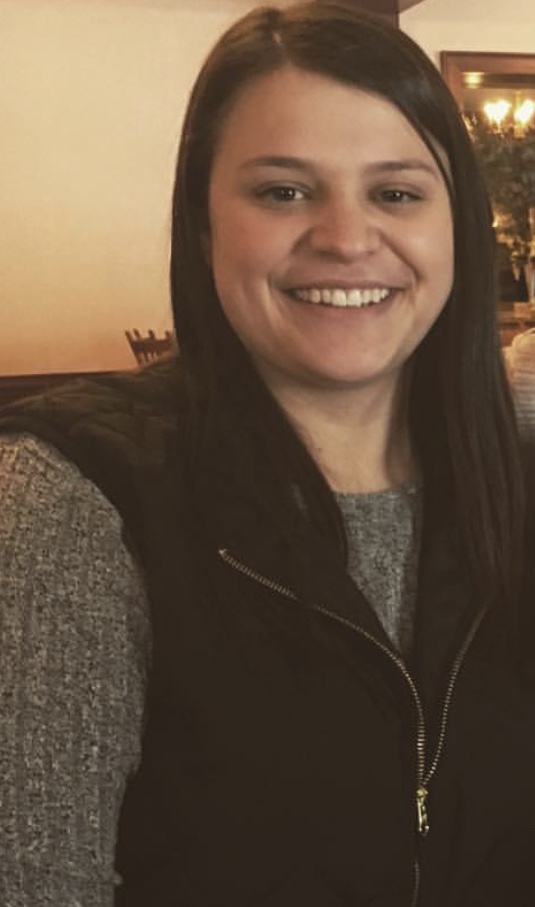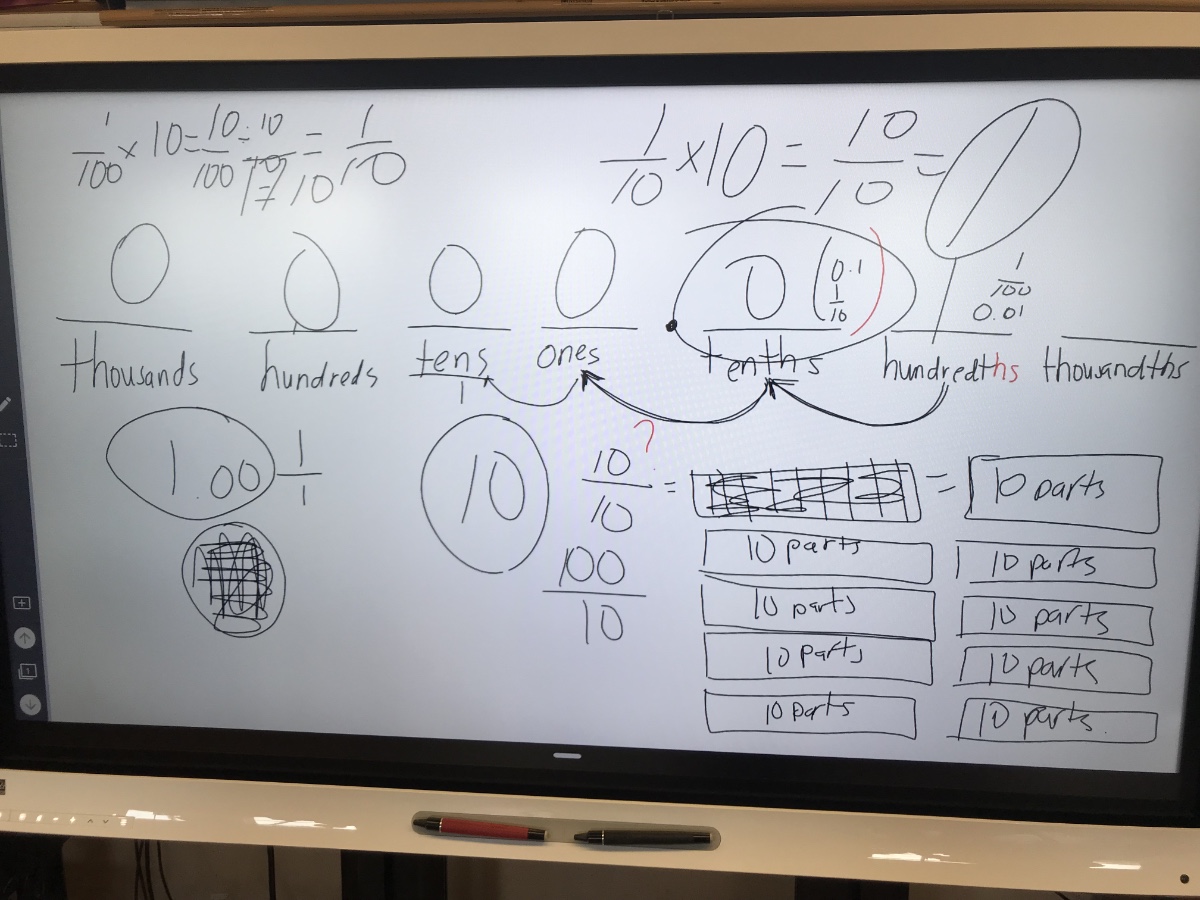Lauren DiCarlo's Journey to Inquiry
Think of your class. What do you see? Do you see lethargic faces, students with their heads down, and only your top 10% answering your questions? Or do you see all students engaged; regardless of level? Do you see students talking about math in a productive argument? Do you see celebrations in students that were “not math thinkers” because they finally understand that pesky area model you have been trying to teach them for months? I can tell you that in just a few months, I have transformed my classroom from the first classroom example to the second.
To gain some perspective, it is best to shed light on the type of environment that we are in. I am a 4th grade teacher in a pretty rough neighborhood. All of my students are classified as coming from low income households. 100% of my students qualify for free lunch.I have a total of 24 students in my classroom with 7 students on IEPs, 5 students classified as English Language learners and 3 students targeted for math interventions due to underperformance in the previous grade.
Inquiry Based Learning was a topic that I had heard of before in my undergraduate studies at Westfield State University. It really seemed like a great way of teaching and I had ideas of implementing it into my classroom since I learned about it. Reality check. The bright eyed bushy tailed first year teacher that I was 3 years ago was put into a classroom that had major behavioral problems. Students in this classroom came from a 3rd grade year with little structure (They had gone through 6 teachers that year). I had to focus on classroom management more than inquiry. The learning had to be so structured. Kids could not discuss things and disagree without fighting each other. The inquiry based learning that I wanted to try was not going to happen with a classroom full of students with bad behavior, right? Wrong.
I needed a push. I took this independent study to give myself that push to do inquiry again. If I had known that first year what I know now, I believe the behaviors in that classroom would have definitely gone down with an increase in student engagement. Flash forward to this year, my third year teaching in the same school. Behaviors are not as intense as they were that first year and I am more comfortable with the curriculum. I was still having trouble however. For the most part, I was the main mathematical authority in the classroom. I was leading the lesson and students were listening and occasionally answering questions. There was a lot of call and response type questions with students giving me answers that they thought I wanted to hear. I was so frustrated because I had the same 5 kids answering the questions that I was asking. How can I get everybody involved if I have the same kids overshadowing the kids that I really want to hear from? How will I know if every kid understands the topic? Cue inquiry!
With any new implementation in life, starting small is a huge key to success. It’s not expected that you drop how you have taught for however many years and start something new from scratch. I started very small. Adjusting how I deliver objectives. In my district, it is stressed that students need to be aware of the objective at the start of the lesson and be able to understand the objective by the end of the lesson. I found that if students are aware of the objective at the beginning of the lesson, then when given their problem of the day in the beginning of class, the student would not need much effort to know what operation to perform. For example: Objective: Today we will multiply whole numbers by fractions. Problem of the day: Erin uses 2/8 yard of string to make 1 bracelet, how many yards of string will Erin use to make 6 bracelets? Without any effort at all, students will know that they will have to multiply 2/8 by 6 to get their answer just by looking at the objective. I was running into trouble when I would give a review quiz and see students struggling with word problems because they never had to really know what operation they were going to use to solve the problem.
With the permission from my principal, I wanted the students to develop their own objective at the end of the lesson based on what we learned that day. This challenged students to use vocabulary they learned in their lesson as well as truly understand and digest their understanding. I was pleasantly surprised with some of the objectives the students were developing. Some of them were even better than the ones I had developed! One student objective that was provided was: I was able to decompose whole numbers and expressions. The student was able to use the mathematical vocabulary term of decompose as well as expressions. The term expressions was not even explicitly taught during the lesson!
We transitioned into a lot of student led discussions where the problem was given to the students in a group and each person had to contribute something. At first, the more shy students were staying quiet, but you could tell something was different. After a couple of talks with groups about participation, I could see more students getting involved. I could see the students in my targeted subgroups becoming more and more excited. When I asked for answers, even if they could not give me the final answers, I could see their process. I could see their work on the paper. It was amazing. With just one step I could see a difference. The kids were more excited. It was being noticed by other people too. The observations that were happening had positive notes about the student engagement and the detailed objectives that students were giving.
Grades were starting to increase. Before implementing inquiry in my classroom, I had students scoring mostly in the high 60% range, with few performing any higher than that. After one unit using inquiry, 95% of students scored above an 80%. My jaw nearly hit the floor.
One student in particular stood out to me. We are going to call him “Tom.” Tom is classified as an English Language Learner. He is reading below grade level and is receiving math interventions. Tom was one of those students that did not participate very much. He laid low and would rarely complete his work. After starting inquiry with him, something switched. I started one on one with Tom. Asking him clarifying questions. By asking him clarifying questions instead of leading questions, I was able to understand that Tom was not really far behind in his mathematics thinking at all. He was performing operations that some of my higher level students were not. When I really understood his learning and his thinking, I realized that all he needed was more time. By giving Tom more time, I was able to celebrate his successes with him; no matter how little they were. When he started feeling the success from the inquiry model he started performing at a higher level than expected. His scores increased. His attention increased. His happiness and good behavior increased.
My experience so far with inquiry has been both challenging as well as eye-opening. The challenges I face when doing inquiry are that I am constantly self-monitoring as I am teaching. When I am thinking of a question to ask, I immediately ask myself if that was the right question to ask. Was it too leading? Was the question ELL friendly? With practice, I am slowly reassuring myself that I need to ask these questions and if they are too leading, I can reflect on that after the lesson; it does not need to be immediately attended to. I can admit that some days, my activities are teacher directed. This will happen especially if you are dealing with behavior issues that arise or other things that we know come up as teachers. I have learned that it is ok if this happens. Every day is not perfect, but the results are clear. Inquiry works: it engages students, it gets them excited about the learning, and most importantly, they are learning.
Example of Student Work
In this lesson the students were discovering the relationships between place values (the place value to the left is ten times the original place value). The students were asked what the relationship was between the one in the hundredths place and the one in the tenths place in the number 0.11. They named all the place values and represented each as a decimal and a fraction. Within their groups, they discovered that if you multiply 1/100 by 10, you get 10/100 and 10/100=1/10. There was very little teacher prompting but a high amount of productive struggle.


